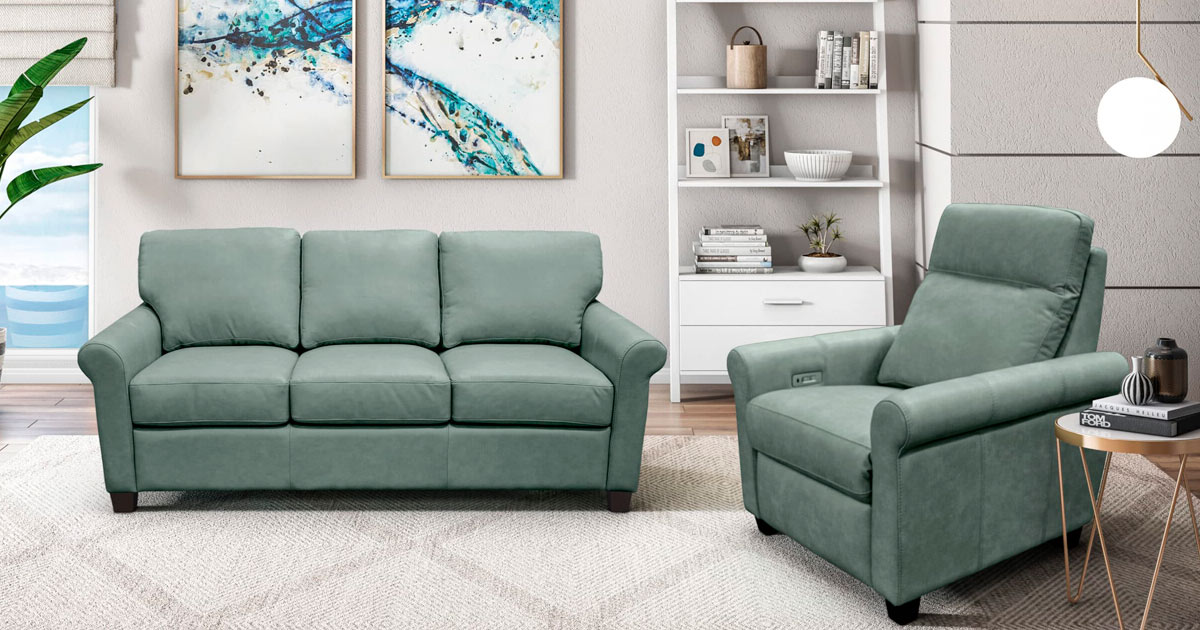Decoding Leather Labels: Your Guide to Genuine Leather
Welcome! We’re here to help you unravel the mysteries behind leather labels and empower you to make informed choices when selecting the perfect piece for your home. In today’s post, we delve into the often perplexing world of genuine leather, shedding light on what the label truly means and why it’s crucial to understand the distinctions.
The Genuine Leather Conundrum:
Ever wondered why the term “genuine leather” can be more confusing than clarifying? The truth is, this label is intentionally ambiguous and designed to leave consumers in the dark. It essentially tells you what the leather is not – it’s not full-grain, and it’s not top-grain. Consider it a subtle buyer beware signal.
Split Leather: Affordable but with Caveats:
Enter split leather, a more budget-friendly alternative to top-grain or full-grain. This classification refers to the under layer split from the surface layer, lacking the natural animal scarring that gives leather its authentic look. While split leather serves many purposes, it comes with trade-offs. It’s less durable, making it crucial for you to be vigilant when assessing product quality, as it may be challenging to distinguish from synthetic alternatives.
Top-Grain Leather: The Common Choice:
Top-grain leather, the second-highest quality, separates from the “split” layer, resulting in a standard cut, more pliable material. While it lacks the natural patina development of full-grain, it compensates with greater resistance to stains. This quality will still show natural markings of the hide such as stretch marks, natural graining, and Bug bites. What classifies this as top grain is some areas will have been sanded down slightly to remove some scaring. This leather is still a breathable hide and will allow your body heat to escape through the pores. Understanding these nuances empowers you to choose based on your preferences and priorities.
Full-Grain Leather: Uncompromised Quality:
Now, let’s explore the cream of the crop – full-grain leather. Hides that haven’t undergone sanding, buffing, or snuffing fall into this category. This preserves the complete natural grain, ensuring fiber strength, durability, and breathability. Full-grain leather develops a unique patina over time, making it a top choice for high-quality furniture. Keep an eye out for two finish types: full aniline and semi-aniline.
Full Aniline leather has been dyed and that is all, no correction has been done to this hide. This type of hide is normally a “naked hide” with no protection against absorbing body oils.
Semi Aniline has been dyed and has another application applied such as oil, wax, a second color to produce a savage or two tone look or a slight clear coat to keep it from absorbing body oils.
The Importance of Asking Questions:
When navigating the world of leather, communication is key. After all, your satisfaction hinges on understanding what you’re investing in. Don’t hesitate to ask the sales associate about the type of leather. If their confidence wavers, seek out someone with more product knowledge. A lack of information could be a sign that you’re in the wrong store.
The world of genuine leather is intricate, but armed with knowledge, you can confidently navigate your way to the perfect leather furniture.
Are you ready to dive deeper into the world of leather furniture and find the perfect fit for your space? Our showrooms in Boca Raton and Fort Lauderdale are more than just a place to see furniture – they’re interactive spaces where you can consult with our Leather Experts. Stop by, have a chat, and let us guide you toward furniture custom created to match your lifestyle. Your dream living space is just a conversation away at
Leather Express.


